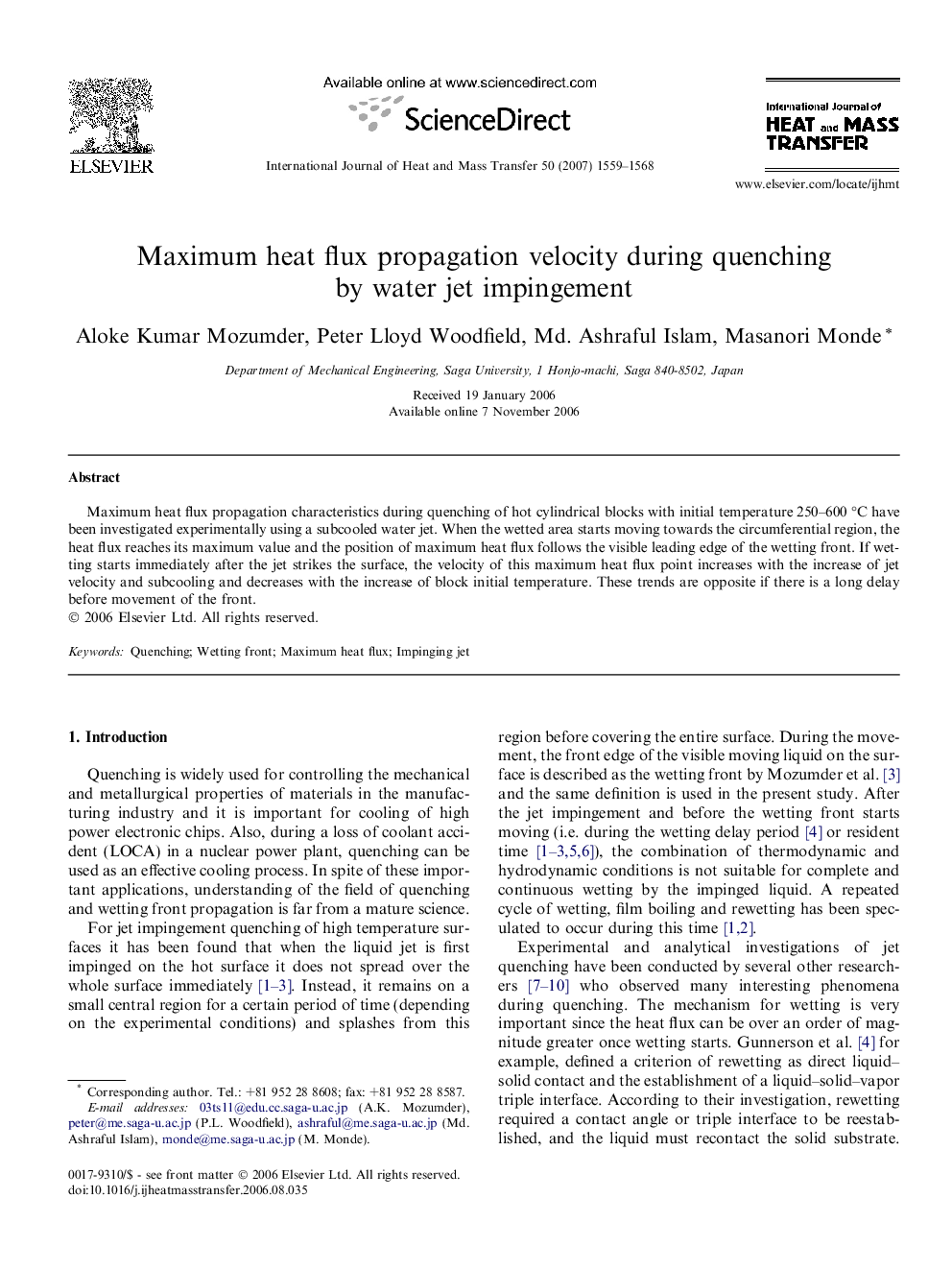| Article ID | Journal | Published Year | Pages | File Type |
|---|---|---|---|---|
| 661098 | International Journal of Heat and Mass Transfer | 2007 | 10 Pages |
Abstract
Maximum heat flux propagation characteristics during quenching of hot cylindrical blocks with initial temperature 250–600 °C have been investigated experimentally using a subcooled water jet. When the wetted area starts moving towards the circumferential region, the heat flux reaches its maximum value and the position of maximum heat flux follows the visible leading edge of the wetting front. If wetting starts immediately after the jet strikes the surface, the velocity of this maximum heat flux point increases with the increase of jet velocity and subcooling and decreases with the increase of block initial temperature. These trends are opposite if there is a long delay before movement of the front.
Related Topics
Physical Sciences and Engineering
Chemical Engineering
Fluid Flow and Transfer Processes
Authors
Aloke Kumar Mozumder, Peter Lloyd Woodfield, Md. Ashraful Islam, Masanori Monde,
